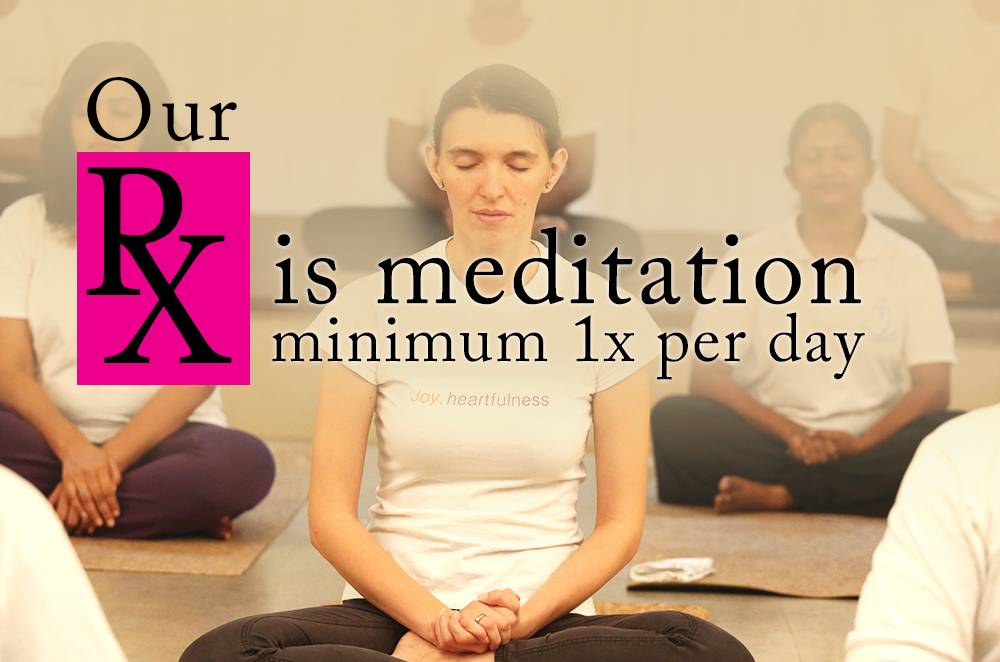Dear friends,
When a flight is about to take off and the cabin attendants are demonstrating the safety procedures, they will give the instruction, “In case of a drop in cabin pressure during the flight, please put on your oxygen mask before helping others.” A common reaction is, “Isn’t that selfish?” but think about it. Unless you are fit, how can you help others? If you are weak, without money or knowledge, how will you help others to be strong, wealthy or knowledgeable?
And what about the need for doctors to be fit before they help patients? For those whose work is concerned primarily with taking care of others, like healthcare professionals, the spirit of altruism holds true and very often they forget themselves. Caregivers are required to put patients first, unmindful of their own circumstances. In particular, doctors are expected to be calm, composed and balanced in their judgment at all times. If a doctor is confused, exhausted, angry or restless, his or her judgment will be clouded, her focus wavering, and her performance definitely not up to par with her potential. Would you like to be treated by such a doctor? Clearly no.
Caregivers are required to put patients first,
unmindful of their own circumstances.
In particular, doctors are expected to be calm,
composed and balanced in their judgment at all times.
But medical professionals are under tremendous pressure nowadays, and the demands imposed upon them are resulting in burnout, disillusionment, exhaustion and stress. A study conducted in 2016 on a cross section of Indian doctors revealed that 45% and 65% scored high on a scale of emotional exhaustion and depersonalization respectively. There has been an alarming increase in the number of untimely deaths, suicidal tendencies, anxiety-related disorders, fatigue, stress, compassion fatigue and burnout among Indian doctors. When there is just one doctor for every 1,700 people, it is not surprising.
But this problem is not restricted to India; it is a worldwide phenomenon. Taking cognizance of these circumstances, the World Medical Association (WMA) General Assembly revised the Declaration of Geneva on 14 October 2017 in Chicago, adding an important clause: “I will attend to my own health, well-being and abilities in order to provide care of the highest standard.”
What happens when we are not at ease, when we are in a state of dis-ease? It is like a car that needs a service – when the engine requires oil or the tires need more pressure. In other words, the tuning is disturbed. The field of quantum biology tells us that the human body also has its particular vibrational frequency. Any illness that affects the body also affects the vibratory level of the cells. For example, when we have a common cold, a fever, cancer, or a mental-emotional condition like depression, our natural rhythm or vibration is affected. Per contra, the state of health that is associated with vibrational coherency of the body, mind and spirit creates happiness and balance within.

The question is: how can this be achieved? Are there practices that can help us? Actually, the age-old tradition of meditation, which has been around since before recorded history, has many health benefits. It is not that meditation will cure physical illnesses – if you have a virus or a broken leg, you need medical attention – but recent EEG and functional MRI research studies have shown that the act of meditation produces both short-term as well as long-term neurophysiological and neuroanatomical changes that affect our sense of well-being. For example:
- In one study, a 2-month Mindfulness Meditation program resulted in increased left-sided electrical activation of the anterior brain, a pattern associated with positive effects and emotions, whereas no such changes occurred in a wait listed control group.
- An MRI-based study of experienced meditators found greater gray matter density in lower brainstem regions involved in the autonomic system and cardiorespiratory control compared with age-matched controls.
- A meta-analysis of 21 neuroimaging studies examining around 300 meditation practitioners found 8 brain regions consistently altered in meditators, including areas key to meta-awareness, body awareness, and self- and emotion regulation.
- Anatomical changes have been reported in the cerebral cortex, subcortical gray and white matter, brainstem and cerebellum of meditators.

One such set of very effective practices is Heartfulness Meditation, a simple and effective system of Raja Yoga that helps practitioners reach deep meditative states and expanded levels of consciousness, and also results in deeper wisdom and intuitive understanding, in a comparatively short period of time with minimal effort. This is because of the transformative effect of Yogic Transmission or Pranahuti, which helps establish balance and vibrational coherence in those who receive it.
When we meditate on the heart with Transmission,
the heart and mind work together as one – they form
a coherent vibrational field, and this affects every aspect of life.
When we meditate on the heart with Transmission, the heart and mind work together as one – they form a coherent vibrational field, and this affects every aspect of life. The mind can be fully awake, alert and cognitively functional, while at the same time we feel the profound mystical consciousness of the heart. As a result, we develop an expanded consciousness, utilizing our minds in the most dynamic way.
Studies on the effect of Heartfulness Meditation show improved heart rate, BP, sleep patterns and heart rate variability. Also, Heartfulness Meditation has a significant effect on the length of the telomeres that cap our chromosomes, and this is correlated with improved immunity and longevity. Heartfulness Meditation refines and deepens our intellectual capacity to include intuition and wisdom. Our contemplative thinking function deepens to include feeling. We learn to manage our emotions – fear, greed, worldly worries, restlessness, doubt and confusion. Instead we cultivate courage, love, clarity of mind, purpose, peace and a state of contentment. The latter are qualities clearly desirable in a doctor, whose decisions impact the lives of patients and everyone connected with them. We do not want our doctors to be victims of stress, overwork, disillusionment and discontent.
In the spirit of “Physician, heal thyself,” on Doctors’ Day I warmly welcome all medical professionals to join me in experiencing Heartfulness Meditation at www.heartfulness.org/masterclass or via our LetsMeditate App.
All the best,
Daaji
REFERENCES
Levine GN, Lange RA, Bairey‐Merz CN, et al. Meditation and Cardiovascular Risk Reduction: A Scientific Statement From the American Heart Association. Journal of the American Heart Association: Cardiovascular and Cerebrovascular Disease. 2017;6(10):e002218. doi:10.1161/JAHA.117.002218
Thimmapuram J, Pargament R, Sibliss K, Grim R, Risques R, Toorens E. Effect of Heartfulness Meditation on burnout, emotional wellness, and telomere length in healthcare professionals. Journal of Community Hospital Internal Medicine Perspectives. 2017;7(1):21-27. doi:10.1080/20009666.2016.1270806.



